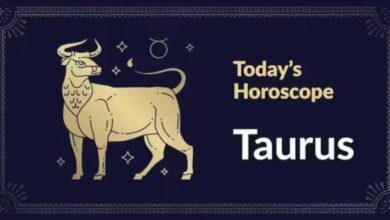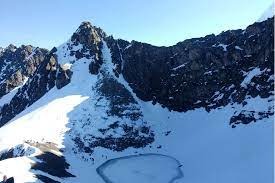Instagram just uncovered the amazing moisturizing power of Shata Dhauta Ghrita, or 100-times-washed ghee
Instagram users are presently obsessed with the Ayurvedic beauty secret known as “Shata Dhauta Ghrita,” at a time when K-beauty and J-beauty are the newest buzzwords in the skincare industry.

There are a ton of videos on social media promoting a homemade moisturizing product made from cow ghee. In addition to showcasing the creamy product’s many skincare advantages—such as deep nourishing, eczema treatment, wrinkle reduction, and soothing sunburned and irritated skin—the viral films also show off how to make it.
Will using this Ayurvedic cream affect the way you take care of your skin? See what dermatologists and Ayurvedic specialists have to say about it by reading on.
Shata is the word for “hundred,” Dhauta is for “washed,” and Ghrita is for “ghee.” Shata Dhauta Ghrita is essentially cow ghee that has undergone many, traditional, purification processes—100 times, to be exact.
“Shata Dhauta Ghrita is the name given in Ayurveda to a mixture of ghee that has been cleansed 100 times. Deeply moisturizing your skin is a well-kept beauty secret, according to Dr. Chaitali Deshmukh, an Ayurvedic specialist at Birla Ayurveda.
The procedure
Using this procedure, 100 precise cycles of churning water into cow’s ghee in a copper kettle are required.
Selected for the purifying procedure is premium cow ghee. The washing procedure is often carried out in a copper vessel. The video below shows how the ghee is 100 times cleaned with water.
Every washing cycle starts with the ghee being melted and then combined with water, and then the impurities are removed from the ghee. One hundred times, the procedure is carried out.
Typically, the ghee is sun-dried to eliminate any residual moisture after the washing procedure. Shata Dhauta Ghrita is kept fresh and airtight for future use when it has dried.
While a number of viral videos depict individuals making this cream at home, Shata Dhauta Ghrita is being marketed as a potential moisturiser by a number of Ayurvedic skincare companies.
“This cream should be created on the night of the full moon in a pure copper vessel by washing pure cow ghee 100 times while reciting sacred mantras, as per the 400–200 BC Charaka Samhita, one of the most important Ayurvedic books,” adds Dr. Deshmukh.
Ayurvedic specialists comment
Ghee’s texture is altered (becomes lighter) and skin absorption is facilitated by frequent washing.
Vicram Sharma, director of Baidyanath Group and author of the book “Ayurveda Advantage,” says, “The significance of this repeated washing is to reduce the size of the fat particles so that the emollient can be absorbed better, penetrating the skin more deeply.”
The procedure also transforms the ghee’s consistency, giving it a creamier texture instead of an oily one. Copper’s antibacterial and antioxidant properties are added to ghee by minute quantities of the metal that seep into it after washing, says Sharma.
Experts claim Shata Dhauta Ghrita is a great complement to any summer beauty regimen in addition to applauding it for its possible skincare advantages. According to Dr. Deshmukh, “it can be used as a natural moisturiser every day.”
It may help soothe burnt skin in the summer and promote the recovery of chapped skin in the winter. She says that cow ghee possesses Sheeta virya, or cold power, which may rise by up to 100 times after 100 washes.
What dermatologists say
Dermatologists agree that the two main ingredients of Shata Dhauta Ghrita, or 100-times-washed ghee, clarified butter and copper, provide several skincare advantages. They do, however, note that it may not be appropriate for everyone and that it can also have some adverse effects.
According to Dr Niketa Sonavane, a well-known dermatologist and the creator of Ambrosia Aesthetics in Mumbai, “although there isn’t much scientific research specifically on Shata Dhauta Ghrita, some of its potential benefits align with the properties of clarified butter (ghee), and copper, which are its main components and the purification vessel, respectively.”
Dr. Niti Gaur, a dermatologist from Gurugram who founded Citrine Clinic, continues, saying that ghee’s high antioxidant and fatty acid content is what gives it its nourishing and moisturizing qualities. Ghee’s fatty acids help improve skin health overall, lessen inflammation, and restore moisture to the skin. Furthermore, ghee’s antioxidants may have a shielding effect against environmental stresses and early aging.
The advantages
Moisturizing: Ghee is well renowned for its ability to moisturize, and putting it on the skin may help nourish and hydrate dry skin.
Benefits against aging: Packed with copper particles from the vessel, vitamins A, E, and K, and omega-3 fatty acids, this elixir is said to fight wrinkles, dark circles, and fine lines.
Antioxidants like vitamin E and beta-carotene found in ghee may help shield the skin from damage brought on by free radicals. Dr. Sonavane continues, “This may help to create healthier-looking skin and slow down the aging process.
“But the effectiveness relies on the skin barrier absorbing the copper particles and having enough leached copper present,” dermatologist Dr. Geetika Srivastava, who founded Influennz Skin and Hair Clinic in New Delhi, adds.
Calms skin: Studies have shown that ghee’s anti-inflammatory qualities may help to relieve skin that is irritated or inflamed.
Effects against microbes: The metal used in the washing container, copper, has antibacterial qualities.
“According to Dr. Sonavane, these characteristics may aid in the management of skin infections or conditions made worse by microbial overgrowth by inhibiting the growth of specific microorganisms on the skin.”
Natural composition: Shata Dhauta Ghrita’s supposedly mild and natural formulation may be helpful to certain people with sensitive skin.
Consequences and adverse effects: Dermatologists stress that it’s crucial to remember that Shata Dhauta Ghrita could not be helpful for some people. For example, ghee-based creams may be excessively thick for those with oily or acne-prone skin and may even make outbreaks worse, according to Dr. Gaur.
Allergy reaction: If the ghee used in the recipe is not of the highest quality or is not well processed, it could include bacteria or other contaminants that cause allergic reactions or other negative reactions. Running a patch test is crucial.
aggravation of acne: Although ghee isn’t thought to be comedogenic (pore-clogging), those who are prone to acne may discover that using products like Shata Dhauta Ghrita makes their problem worse.
Copper Sensitivity: Shata Dhauta Ghrita should be used with care by anyone who are known to be allergic to or sensitive to copper.
Dermatologists also dispute Shata Dhauta Ghrita’s purported capacity to protect against sunburn, as promoted by a few popular films. “Ghee does not offer sun protection; therefore, it is important to regularly apply a broad-spectrum sunscreen to protect your skin from damaging UV rays.”
Briefly put
If Shata Dhauta Ghrita works for your skin, it’s a great moisturizer, but you should use care and take your skin’s demands and sensitivity into account. Do see a dermatologist to see if you can include it into your daily regimen.
Though Ayurvedic experts advise preparing Shata Dhauta Ghrita under a professional’s guidance, you may still choose to make it yourself.







